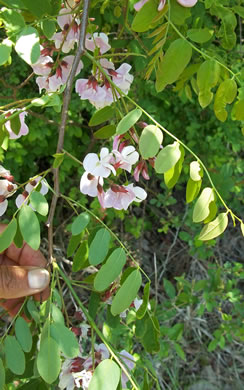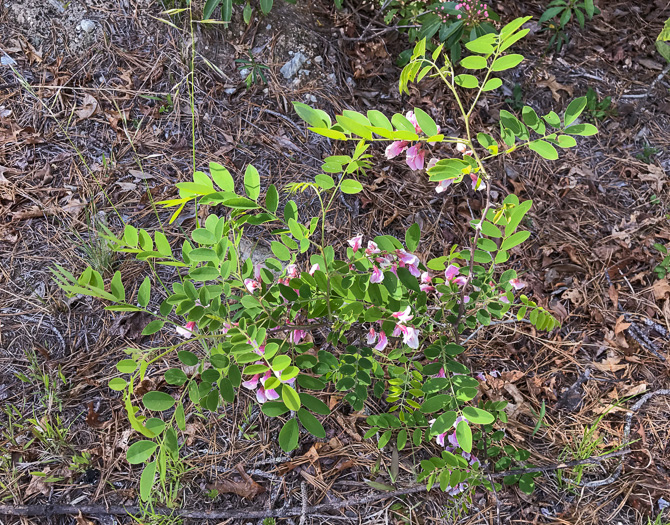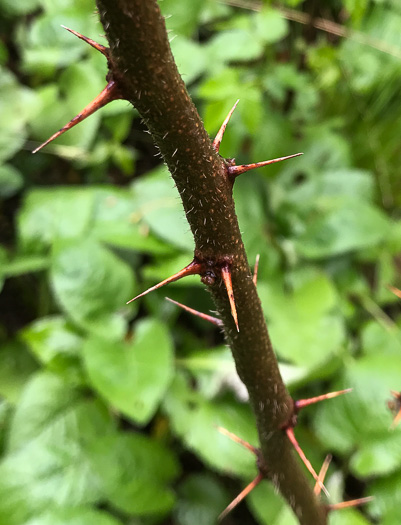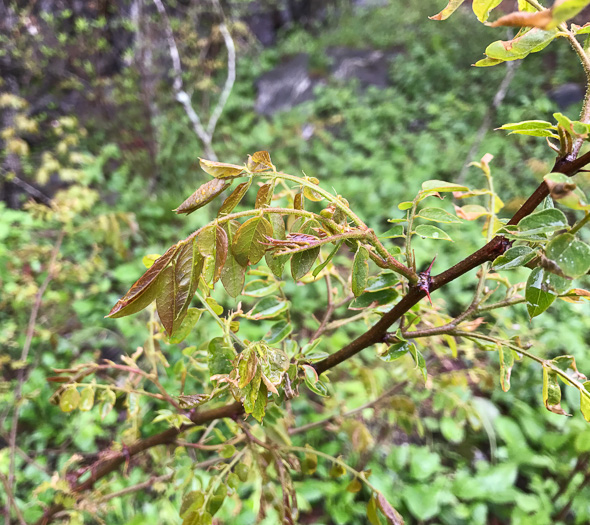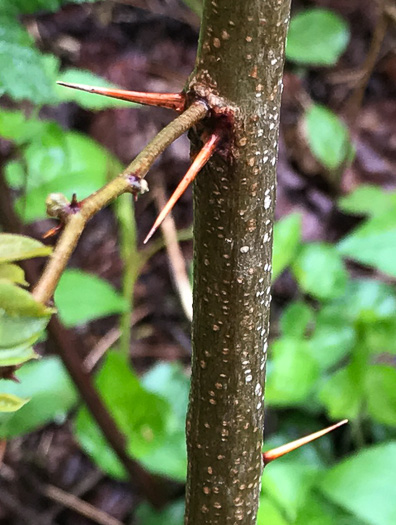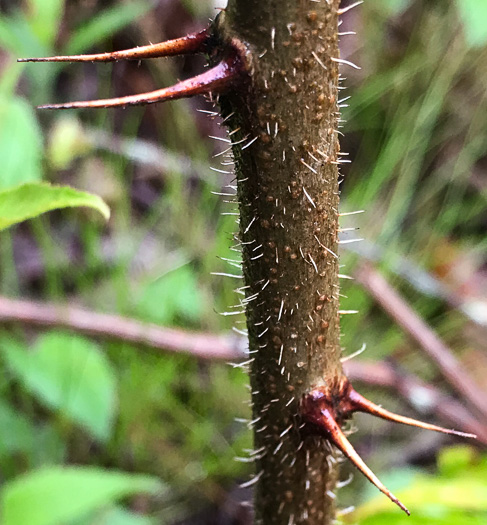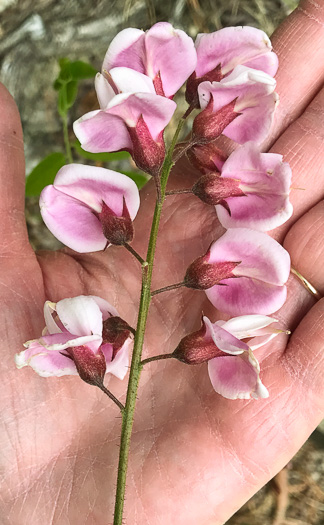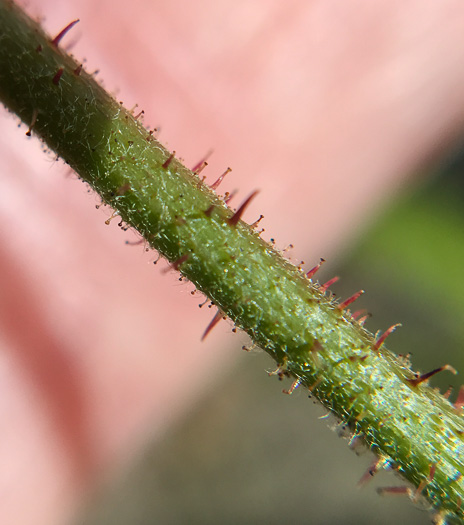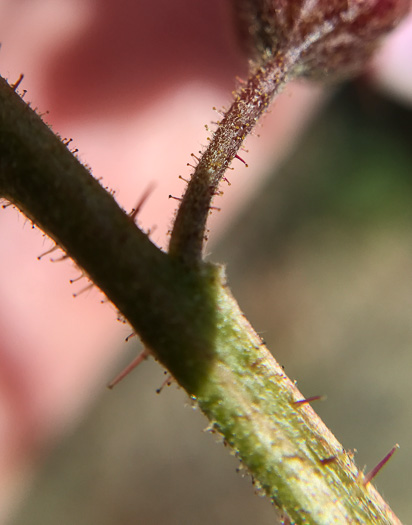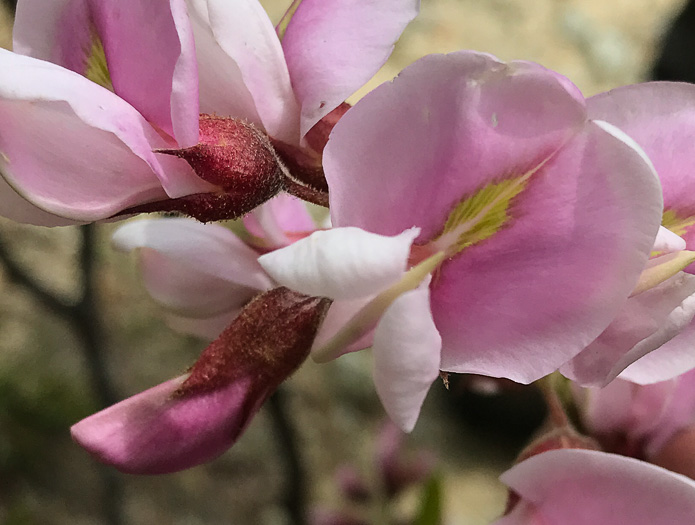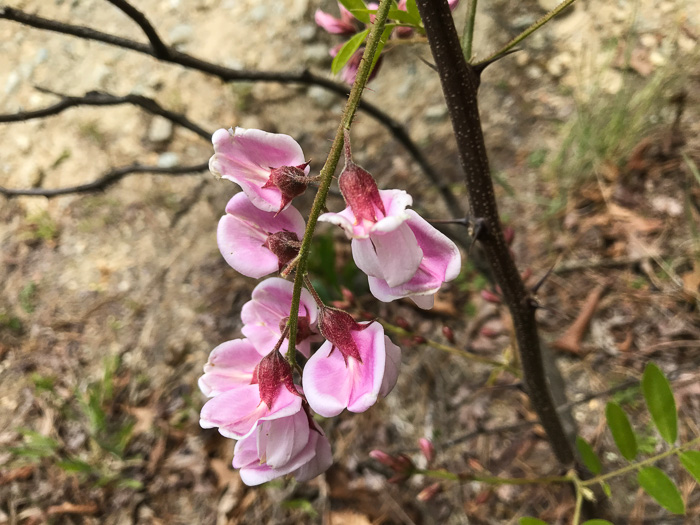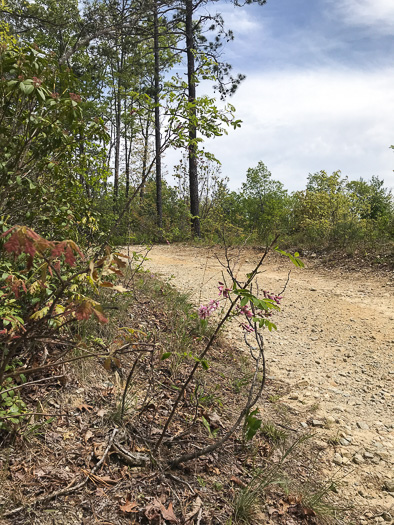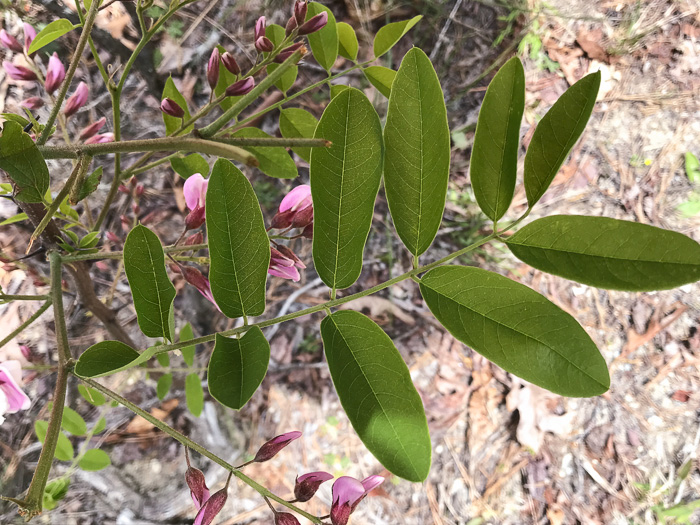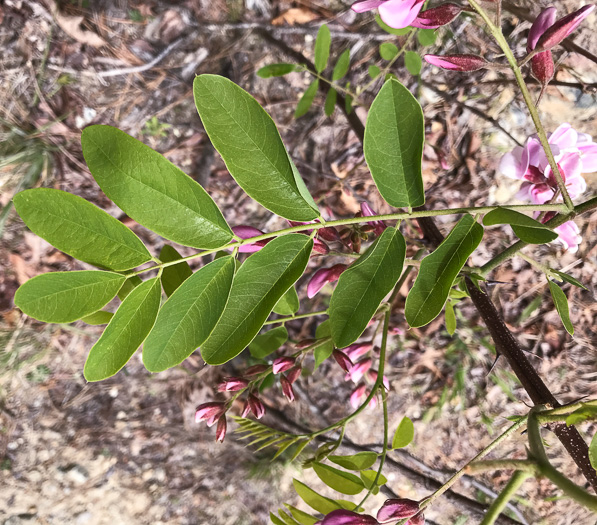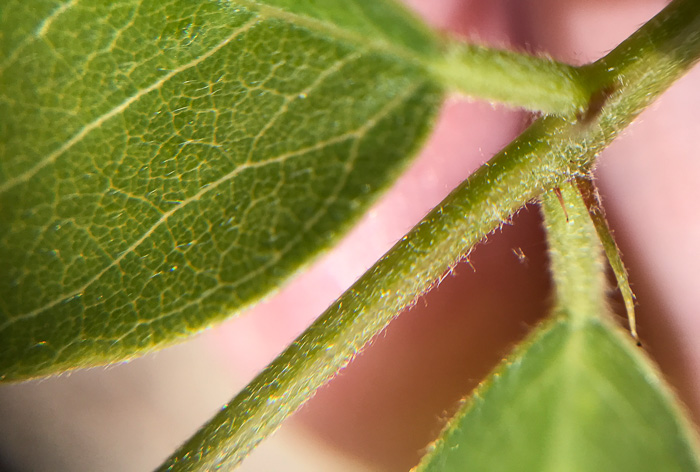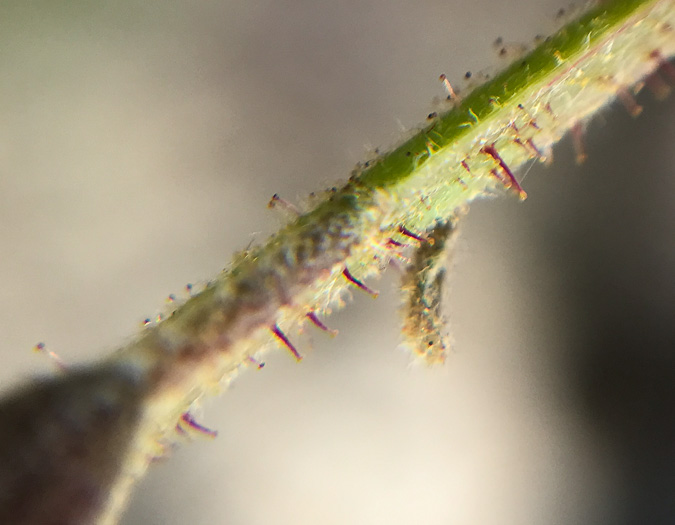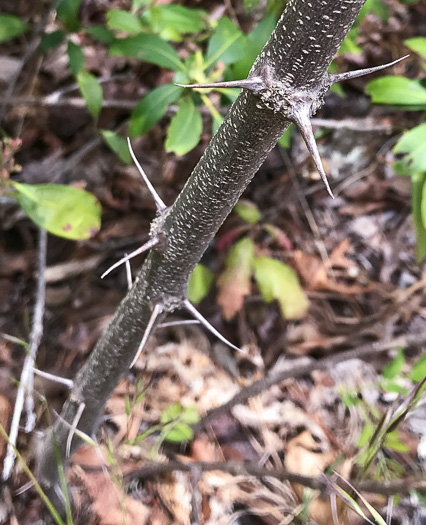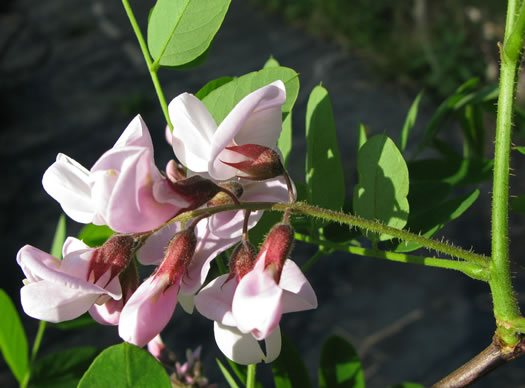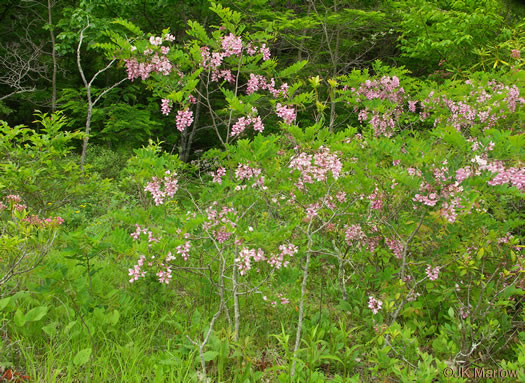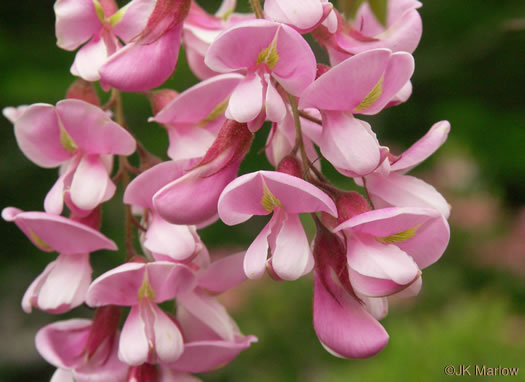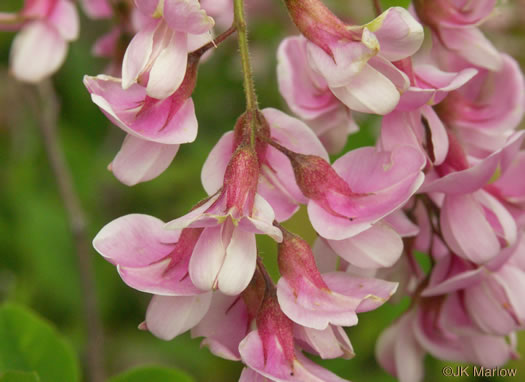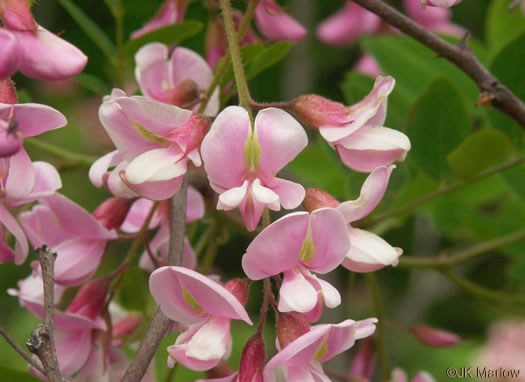Spermatophytes (seed plants): Angiosperms (flowering plants): Eudicots: Core Eudicots: Rosids: Fabids: Fabales
WEAKLEY'S FLORA OF THE SOUTHEASTERN US (4/24/22):
Robinia hispida var. kelseyi
FAMILY
Fabaceae
Go to FSUS key
Dig deeper at SERNEC, a consortium of southeastern herbaria.
Learn more about the several varieties of Bristly Locust from the Vascular Plants of North Carolina.
Extrafloral nectaries, nectar-producing glands physically apart from the flower, occur in 2000+ plant species, including Robinia. Read more at UF/IFAS Extension.
SYNONYMOUS WITH
PLANTS NATIONAL DATABASE:
Robinia hispida var. kelseyi
FAMILY
Fabaceae
INCLUDED WITHIN Floristic Synthesis of North America. BONAP (Kartesz, 2021)
Robinia hispida var. hispida
SYNONYMOUS WITH Robinia (Leguminosae: Papilionoideae) (Isely & Peabody, 1984)
Robinia hispida var. kelseyi
SYNONYMOUS WITH VASCULAR FLORA OF THE CAROLINAS (Radford, Ahles, & Bell, 1968) 098-32-008:
Robinia kelseyi FAMILY Fabaceae
SYNONYMOUS WITH Manual of the Southeastern Flora (Small, 1933, 1938)
Robinia kelseyi
COMMON NAME:
Kelsey's Locust
To see larger pictures, click or hover over the thumbnails.
JK Marlow jkm200522_5099
May Jackson County NC
Stipular spines slender and weak, per Woody Plants of the Southeastern US: A Winter Guide (Lance, 2004).
JK Marlow jkm200522_5106
May Jackson County NC
Extrafloral nectaries can be found near Robinia's stipular spines, per Many Plants Have Extrafloral Nectaries Helpful to Beneficials (Mizell, 2001).
JK Marlow jkm200522_5125
May Jackson County NC
Twigs glabrous or with a few bristles, per Woody Plants of the Southeastern US: A Winter Guide (Lance, 2004).
JK Marlow jkm230505_3009
May Transylvania County NC
DuPont State Forest
Rachis of the inflorescence.
JK Marlow jkm230505_habit_3036
May Transylvania County NC
DuPont State Forest
These plants ranged in height from 1 to 5'.
JK Marlow jkm230505_leaf_2992
May Transylvania County NC
DuPont State Forest
Has narrower leaflets than any other R. hispida except occasional forms of var. rosea, per Robinia (Leguminosae: Papilionoideae) (Isely & Peabody, 1984).
JK Marlow jkm230505_leaf_3027
May Transylvania County NC
DuPont State Forest
Leaflets 9-13, narrowly elliptic to lanceolate or oblong-lanceolate, per Vascular Flora of the Carolinas (Radford, Ahles, & Bell, 1968).
![]() COMPARE
leaves of Locust species
COMPARE
leaves of Locust species
JK Marlow jkm230505_spines_2995
May Transylvania County NC
DuPont State Forest
Stipular spines slender, usually present (vs. short or lacking in var. rosea), per Woody Plants of the Southeastern US: A Winter Guide (Lance, 2004).
WEAKLEY'S FLORA OF THE SOUTHEASTERN US (4/24/22):
Robinia hispida var. kelseyi
FAMILY
Fabaceae
SYNONYMOUS WITH
PLANTS NATIONAL DATABASE:
Robinia hispida var. kelseyi
FAMILY
Fabaceae
INCLUDED WITHIN
Floristic Synthesis of North America. BONAP (Kartesz, 2021)
Robinia hispida var. hispida
SYNONYMOUS WITH
Robinia (Leguminosae: Papilionoideae) (Isely & Peabody, 1984)
Robinia hispida var. kelseyi
SYNONYMOUS WITH
VASCULAR FLORA OF THE CAROLINAS (Radford, Ahles, & Bell, 1968) 098-32-008:
Robinia kelseyi
FAMILY
Fabaceae
SYNONYMOUS WITH
Manual of the Southeastern Flora (Small, 1933, 1938)
Robinia kelseyi
If a search such as "Carex leptalea var. leptalea" doesn't deliver the results you want, try "Carex leptalea".
Or, to minimize chances of a misspelling, try just "Carex le".
Less is more: If "pencil flower" doesn't deliver the results you want, try "pencil".

